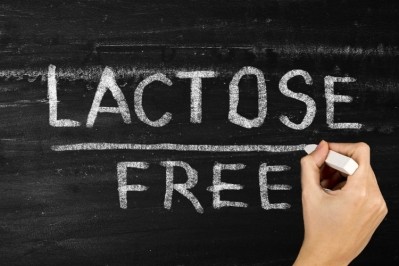Lactose-free dairy: A look at labeling standards and recommendations

According to research, around 68% of the global population has some form of lactose intolerance. The prevalence estimate ranges from 28% in Europe to 64% in Asia and 42% in North America.
In the US, around 36% of the population is lactose intolerant and demand for lactose-free dairy – particularly, fluid milk – has notably grown in the past year, with sales up 11.6% and volumes up 2.6% according to Circana (as of YTD May 2024). Digestibility is the category’s key positive trait, but there are other factors that appeal to consumers, such as long shelf-life, ultrafiltration, the nutritional benefits of milk compared to dairy-free milk alternatives, and association with healthiness through the ‘free-from’ moniker.
But how ‘free’ of lactose is lactose-free and lactose-reduced dairy in reality? We spoke to trade organizations from the US, the UK and Europe to find out what standards and recommendations apply across these key dairy markets.
The US
Andrew Jerome, vice-president of communications at the International Dairy Foods Association, told us that in the US, statements about lactose are not nutrient content claims; rather, they are statements to facilitate avoidance.
“There's no definition for ‘lactose-free’ so it must be a ‘truthful and not misleading’ statement, as with all labeling statements,” he explained. “But there's no threshold level defined as ‘lactose-free’.
“For ‘lactose-reduced’, the regulations for lactase enzyme derived from Kluyveromyces lactis in 21 CFR 184.1338 does provide guidance about lactose reduced milk, specifying that the lactose is at least 70% less than a regular product. This is the only place that differentiates between lactose claims on milk versus other dairy products.”
Manufacturers use analytical testing results of no detectable lactose to ensure ‘lactose-free’ claims are truthful, Jerome explained.
The EU
A spokesperson for the European Dairy Association (EDA) told us that EU regulations on lactose-free labeling are primarily guided by Regulation (EU) No 1169/2011. “It is important to highlight that there isn't a specific EU-wide standard solely for lactose-free or low-lactose products,” the EDA spokesperson said. “Each EU member state has its own rules and guidelines.”
Only claims on infant formula and follow-on formula are regulated at EU level; according to Article 9 of Regulation (EU) 2016/127, the term ‘lactose-free’ can only apply to such products with lactose content of 2.5mg per 100 kJ (10 mg/100 kcal).
Some EU member states have set threshold levels for the use of the terms ‘lactose-free’ and ‘low lactose’ in foods.
For example, Scandinavian countries such as Denmark, Finland, Norway and Sweden go by 10mg of lactose per 100g of product for lactose-free, and 1g/100g for low-lactose; while Germany, Slovenia and Hungary allow higher lactose content for lactose-free products (100mg/100g) and the Republic of Ireland sets its lactose-free limit at zero detectable lactose and galactose present for ‘lactose-free’ and 1g/100g for ‘low-lactose’.
Most consumers with a lactose intolerance can tolerate up to 12g of lactose per serving, i.e. 240ml / 8fl.oz of milk.
“Manufacturers typically follow the EU and national standards closely,” the EDA spokesperson added. Regarding food categories other than milk, hard and soft (ripened) cheeses “are naturally free of lactose and can be consumed by people that are lactose intolerant. Bacteria ferments as part of the lactose and transforms it into lactic acid during the ripening process; the remaining lactose is then discharged during the straining process.
“Yogurts and fermented milks with live cultures improve digestion of lactose in individuals with lactose maldigestion, as confirmed by EFSA.”
The UK
Regarding the UK, Dairy UK told us that there is no specific legislation determining when a ‘lactose-free’ claim can be made.
“However, the expectation is that – if a product carries a lactose-free claim – the lactose levels are below detection limits,” a spokesperson for the organization told us.
“In terms of reduced lactose claims, the Regulation (EC 1924/2006) states that the product should contain at least 30% less lactose compared to a similar product.”
Intolerance isn't the same as allergy
It's possible that the lack of standardization around label claims for lactose-free and lactose-reduced products stems from the fact that lactose isn't an allergen. Rather, the inability to digest lactose is a dietary condition that varies in severity from person to person but isn't life-threatening. Instead, companies that market dairy with lactose-related claims on-pack have a commercial incentive to deliver products that do what they say on the tin.
Source:
Country, regional, and global estimates for lactose malabsorption in adults: a systematic review and meta-analysis
Storhaug, Christian Løvold et al.
The Lancet Gastroenterology & Hepatology, Volume 2, Issue 10, 738 - 746
https://www.thelancet.com/journals/langas/article/PIIS2468-1253(17)30154-1/fulltext














